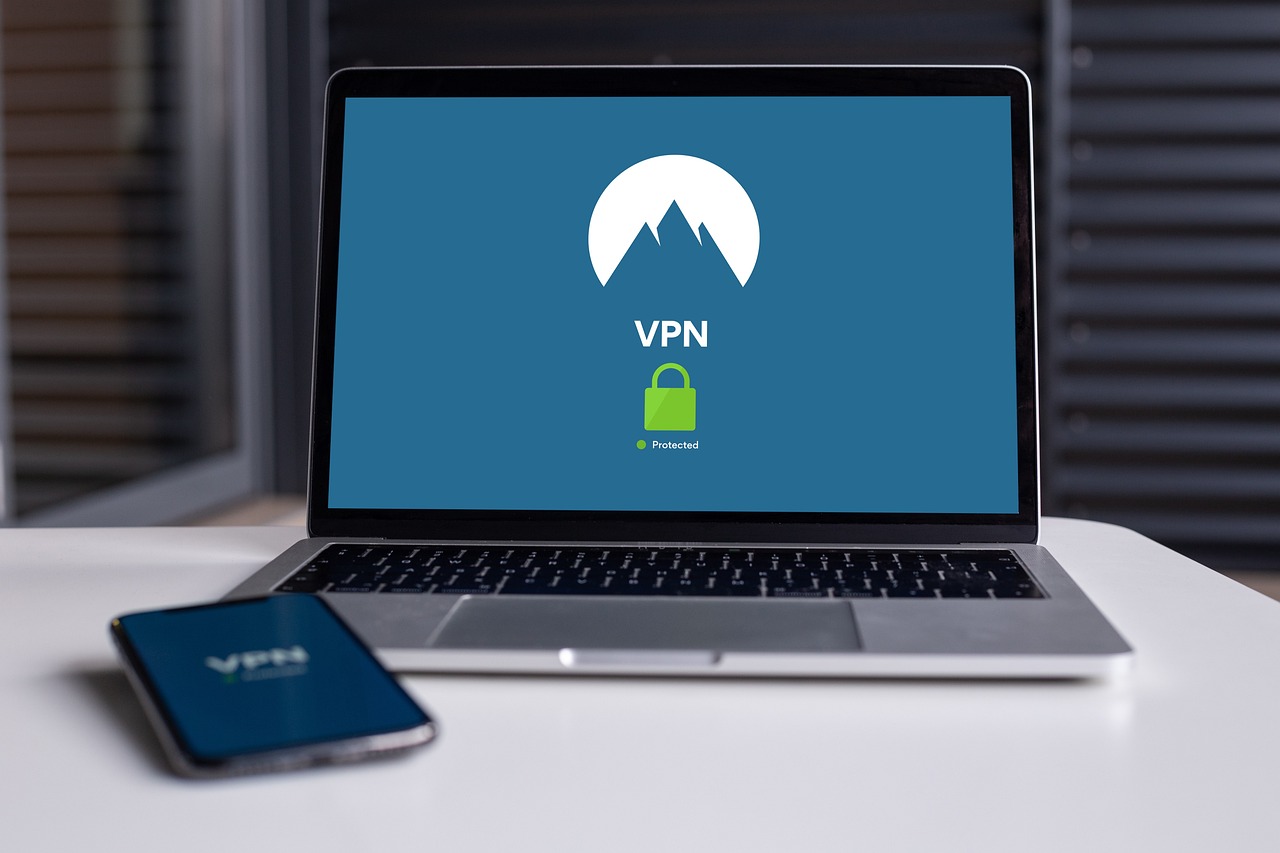The Role of Cybersecurity in Protecting Intellectual Property
In today's fast-paced digital world, the protection of intellectual property (IP) has become more crucial than ever. With businesses relying heavily on innovations, creative works, and proprietary information, the stakes are high when it comes to safeguarding these assets. Cybersecurity plays a pivotal role in this endeavor, acting as a shield against various threats that seek to exploit vulnerabilities in digital infrastructures. Without robust cybersecurity measures in place, companies risk losing their competitive edge, facing legal repercussions, and damaging their reputations. So, what does it really mean to protect intellectual property in the realm of cybersecurity?
Intellectual property is not just a set of rights; it represents the lifeblood of many organizations. It includes inventions, designs, trademarks, and copyrights, all of which contribute significantly to a company's value and innovation potential. The importance of these assets cannot be overstated, as they often drive economic growth and foster creativity. However, as we embrace the digital age, we also expose ourselves to a myriad of cybersecurity threats that can compromise these valuable assets.
Imagine your company has just developed a groundbreaking technology that could revolutionize the industry. Now picture that same technology falling into the hands of competitors due to a cyber breach. It's a nightmare scenario that many organizations face today. Cybersecurity threats targeting intellectual property are becoming increasingly sophisticated, ranging from hacking and phishing to insider threats. As such, understanding these threats is the first step in developing effective strategies to protect your IP.
In this article, we will explore various aspects of cybersecurity's role in safeguarding intellectual property. We'll delve into the types of cyber attacks that specifically target IP, examine the challenges organizations face, and discuss best practices that can be implemented to enhance security. Additionally, we will touch on the legal framework surrounding cybersecurity and intellectual property, ensuring that organizations remain compliant while protecting their assets. Finally, we'll look at the future of cybersecurity in relation to intellectual property, highlighting emerging trends and technologies that will shape the landscape.
So, buckle up as we embark on this journey to understand the critical importance of cybersecurity in protecting intellectual property. The insights you gain here could very well be the difference between thriving in the digital age and becoming a victim of cyber theft.
- What is intellectual property? Intellectual property refers to creations of the mind, such as inventions, literary and artistic works, designs, symbols, names, and images used in commerce.
- Why is cybersecurity important for protecting intellectual property? Cybersecurity is essential for safeguarding intellectual property from theft, unauthorized access, and cyber attacks that can compromise sensitive information.
- What are some common types of cyber attacks targeting intellectual property? Common cyber attacks include ransomware, phishing schemes, malware, and insider threats that can jeopardize the security of IP.
- How can organizations protect their intellectual property? Organizations can protect their IP by implementing best practices such as employee training, access control measures, regular security audits, and compliance with relevant laws.
- What legal aspects should organizations consider regarding cybersecurity and IP? Organizations should be aware of intellectual property laws, regulatory compliance requirements, and the legal implications of cyber threats to effectively protect their assets.

Understanding Intellectual Property
Intellectual property (IP) is a term that encompasses various creations of the mind, which can include inventions, literary and artistic works, designs, symbols, names, and images used in commerce. In today's fast-paced digital world, the significance of IP cannot be overstated. It serves as a cornerstone for innovation and economic growth, fostering an environment where creativity and ingenuity thrive. Just think about it: every time you read a book, listen to music, or use a patented technology, you are engaging with someone’s intellectual property. Protecting these creations is essential not only for the creators but also for the economy at large.
There are several types of intellectual property, each with its own unique characteristics and protections. Understanding these types is crucial for individuals and businesses alike. Here’s a brief overview:
- Patents: These protect inventions and grant the patent holder exclusive rights to use, sell, or license the invention for a certain period, typically 20 years from the filing date.
- Copyrights: Copyrights protect original works of authorship, such as books, music, and films, giving creators exclusive rights to reproduce, distribute, and display their works.
- Trademarks: Trademarks protect symbols, names, and slogans used to identify goods or services, helping consumers distinguish between different brands.
- Trade Secrets: These are practices, designs, formulas, processes, or any information that provides a business advantage over competitors who do not know or use it.
Each type of IP plays a pivotal role in encouraging innovation and creativity. For instance, patents incentivize inventors to bring their inventions to market by providing a period of exclusivity, while copyrights ensure that artists can earn a living from their creations. Trademarks, on the other hand, build brand loyalty and trust, which are crucial for businesses in a competitive marketplace.
Moreover, the economic implications of protecting intellectual property are significant. According to various studies, industries that rely heavily on IP contribute trillions of dollars to the global economy. They create millions of jobs and drive technological advancements that benefit society as a whole. Therefore, understanding and protecting IP is not just a personal concern for creators; it's a societal necessity.
In essence, intellectual property is a vital asset that requires diligent protection. With the rise of the digital age, where information can be easily copied and shared, the challenges of safeguarding IP have become more complex. Organizations and individuals must adopt robust strategies to protect their intellectual property from theft and unauthorized access. As we delve deeper into the realm of cybersecurity, it becomes clear that a strong defense is essential to ensure that innovation continues to flourish.

Cybersecurity Threats to Intellectual Property
In today's hyper-connected world, the protection of intellectual property (IP) has become more critical than ever. With the rise of digital technologies, businesses are increasingly vulnerable to a plethora of cybersecurity threats that can jeopardize their valuable assets. From innovative designs to groundbreaking inventions, it’s essential to understand the risks that lurk in the digital shadows.
Cybersecurity threats targeting intellectual property can manifest in various forms, each with its own set of implications. For instance, the prevalence of hacking incidents has skyrocketed, with cybercriminals employing sophisticated techniques to breach security measures. These attacks not only compromise sensitive information but can also lead to significant financial losses and reputational damage.
Moreover, phishing attacks have become alarmingly common, often disguised as legitimate communications to trick employees into divulging confidential information. Imagine receiving an email that looks like it’s from your boss, asking for sensitive data. It’s a scenario that plays out more often than we’d like to admit, highlighting the importance of vigilance and awareness in the workplace.
Insider threats also pose a unique challenge in the realm of cybersecurity. Employees, whether intentionally or unintentionally, can become the weakest link in the security chain. This could involve a disgruntled employee leaking sensitive information or an unsuspecting worker falling prey to social engineering tactics. Organizations must be proactive in identifying and mitigating these risks to safeguard their intellectual property.
To effectively combat these threats, it’s crucial to understand the various types of cyber attacks that specifically target intellectual property. Below are some of the most prevalent forms:
- Ransomware: This malicious software encrypts critical IP, demanding payment for access. The implications can be devastating, as companies may lose access to their own creations unless they comply with demands.
- Malware: Various forms of malware can infiltrate systems, steal data, and cause irreversible damage to intellectual property.
- Social Engineering: Cybercriminals often manipulate individuals into divulging confidential information, making it essential for organizations to foster a culture of security awareness.
Understanding these threats is not merely an academic exercise; it’s a vital component of an organization’s strategy to protect its intellectual property. By recognizing the various forms of attacks, businesses can develop effective defense mechanisms tailored to their specific vulnerabilities.
Ransomware attacks are particularly notorious for their ability to paralyze organizations. When a company’s IP is encrypted by ransomware, the attackers usually demand a hefty ransom for the decryption key. This situation can lead to a dilemma: pay the ransom and hope for the best, or refuse and potentially lose access to critical assets forever. The implications are dire, making it imperative for organizations to invest in proactive defense mechanisms such as regular data backups and comprehensive security protocols.
Phishing schemes are another significant threat that organizations must navigate. These attacks often involve emails or messages that appear legitimate but are designed to trick employees into revealing sensitive information. Common tactics include:
- Creating a sense of urgency to prompt immediate action.
- Impersonating trusted sources to gain credibility.
- Using malicious links that lead to fraudulent websites.
To counteract these tactics, organizations should implement rigorous training programs that educate employees about recognizing and avoiding phishing attempts. A well-informed workforce is one of the best defenses against these deceptive strategies.
Finally, the threat of insider attacks cannot be overlooked. Employees with access to sensitive information can unintentionally or maliciously compromise intellectual property. This could happen through negligence, such as failing to follow security protocols, or through malicious intent, where an employee deliberately leaks information for personal gain. Organizations need to adopt strategies for identifying and mitigating insider risks, such as implementing strict access controls and conducting regular security audits.
In conclusion, the landscape of cybersecurity threats to intellectual property is complex and ever-evolving. By understanding the types of threats that exist and taking proactive steps to mitigate these risks, organizations can better protect their valuable intellectual assets in this digital age.
Q: What is intellectual property?
A: Intellectual property refers to creations of the mind, including inventions, literary works, and designs that are legally protected.
Q: What are the most common cybersecurity threats to IP?
A: Common threats include hacking, phishing schemes, ransomware attacks, and insider threats.
Q: How can organizations protect their intellectual property?
A: Organizations can protect their IP by implementing robust cybersecurity measures, conducting employee training, and enforcing strict access controls.
Q: Why is employee training important for cybersecurity?
A: Employee training is crucial as it helps create a security-conscious culture, enabling staff to recognize and respond to potential threats effectively.

Types of Cyber Attacks
In the digital age, understanding the that specifically target intellectual property (IP) is crucial for any organization. These attacks can be likened to a thief trying to break into a vault; they aim to steal valuable assets that could be detrimental to the organization if compromised. Among the most notorious types of attacks are ransomware, malware, and phishing, each with its own unique methods and implications.
Ransomware is a particularly alarming threat. Imagine waking up to find that all your valuable documents have been locked away, and the only way to retrieve them is to pay a hefty ransom. This type of attack encrypts files and demands payment for the decryption key, leaving organizations in a precarious situation. The implications can be devastating, not only financially but also in terms of reputation and trust. Organizations must adopt proactive defense mechanisms to protect against such threats, including regular backups and robust security software.
Malware encompasses a wide range of malicious software designed to infiltrate systems and steal sensitive information. Think of it as a virus that infects a body, spreading rapidly and causing damage. Malware can take many forms, including spyware that secretly collects data, or trojan horses that disguise themselves as legitimate software. The key to combating malware lies in constant vigilance and the implementation of strong antivirus solutions.
Then there are phishing schemes, which are often disguised as legitimate communications. Picture receiving an email that looks like it’s from your bank, asking you to verify your account information. These deceptive tactics trick employees into revealing sensitive data, putting the organization's IP at risk. Training employees to recognize and avoid such scams is essential. Organizations should implement comprehensive training programs that educate staff about the common signs of phishing attacks.
In addition to these external threats, organizations must also be wary of insider threats. These can come from employees who either intentionally or unintentionally compromise sensitive information. It’s like having a trusted friend who, without realizing it, shares your secrets with the world. To mitigate these risks, organizations should establish strict access controls and monitor user activity to identify any suspicious behavior.
To summarize, the landscape of cyber threats targeting intellectual property is vast and constantly evolving. Organizations must remain vigilant and proactive in their defense strategies, ensuring they are equipped to handle the various types of cyber attacks that may come their way.
| Type of Attack | Description | Prevention Strategies |
|---|---|---|
| Ransomware | Encrypts files and demands payment for decryption. | Regular backups, strong security software. |
| Malware | Infiltrates systems to steal sensitive information. | Strong antivirus solutions, regular updates. |
| Phishing | Deceptive communications to extract sensitive data. | Employee training, email verification procedures. |
| Insider Threats | Employees compromising information either intentionally or unintentionally. | Access controls, monitoring user activity. |
- What is the most common type of cyber attack? Ransomware is often cited as one of the most common and damaging types of cyber attacks.
- How can organizations protect against phishing? Regular employee training and awareness programs are critical in recognizing and avoiding phishing attempts.
- What should I do if I fall victim to a ransomware attack? Immediately disconnect from the network, report the incident, and consult cybersecurity professionals for assistance.

Ransomware Attacks
Ransomware attacks have become a significant concern in the realm of cybersecurity, especially when it comes to protecting intellectual property (IP). These malicious attacks can effectively lock down critical files and data, rendering them inaccessible until a ransom is paid to the attackers. Imagine waking up to find that your company's proprietary designs, research documents, or even customer data have been encrypted and held hostage! This scenario is not just a nightmare; it’s a reality that many organizations face today.
So, what exactly happens during a ransomware attack? Typically, the process begins with a cybercriminal infiltrating a network through various means such as phishing emails, malicious downloads, or exploiting vulnerabilities in software. Once inside, the ransomware is deployed, and it begins encrypting files across the network. The attackers then demand a ransom, often in cryptocurrency, promising to provide a decryption key upon payment. However, paying the ransom does not guarantee that the data will be restored, nor does it prevent future attacks.
To illustrate the severity of ransomware attacks, consider the following statistics:
| Year | Number of Ransomware Attacks | Average Ransom Amount |
|---|---|---|
| 2020 | 304 million | $111,000 |
| 2021 | 623 million | $220,000 |
| 2022 | 1.4 billion | $350,000 |
These numbers highlight a worrying trend; ransomware attacks are not only increasing in frequency but also in the amounts being demanded. The implications of such attacks extend far beyond financial loss. Organizations may also experience:
- Operational Disruption: Downtime can cripple a business, leading to lost revenue and productivity.
- Reputational Damage: Clients and customers may lose trust in a company that falls victim to such attacks.
- Legal Consequences: Failing to protect sensitive data can lead to legal penalties and compliance issues.
To combat ransomware attacks effectively, organizations must implement a robust cybersecurity strategy. This includes regular data backups, which ensure that even if files are encrypted, a clean copy is available. Additionally, employing advanced security measures such as endpoint detection and response (EDR) tools, firewalls, and intrusion detection systems can help fortify defenses against these threats.
Moreover, fostering a culture of cybersecurity awareness among employees is crucial. Training staff to recognize phishing attempts and suspicious activities can significantly reduce the risk of a successful ransomware attack. After all, the frontline of defense often lies with the people who interact with the technology daily.
In conclusion, ransomware attacks pose a serious threat to intellectual property and overall business continuity. By understanding how these attacks function and implementing proactive measures, organizations can protect their valuable assets and mitigate the risks associated with these increasingly common cyber threats.

Phishing Schemes
Phishing schemes are like digital fishing expeditions, where cybercriminals cast their nets wide to catch unsuspecting victims. These schemes often masquerade as legitimate communications, luring employees into revealing sensitive information such as passwords, credit card details, or proprietary data. Imagine receiving an email that appears to be from your bank, urging you to verify your account information. The urgency and authenticity of the message can easily trick even the most vigilant employee. This is why understanding the tactics used in phishing attacks is crucial for any organization looking to protect its intellectual property.
Phishing attacks can take many forms, including:
- Email Phishing: The most common form, where attackers send emails that look like they come from trusted sources.
- Spear Phishing: A more targeted approach, where attackers customize their messages to specific individuals or companies.
- Whaling: A type of spear phishing that targets high-profile executives or decision-makers within an organization.
- Vishing: Voice phishing, where attackers use phone calls to trick victims into providing personal information.
- Smishing: SMS phishing, involving text messages that prompt users to click on malicious links.
Organizations must implement comprehensive training programs to help employees recognize and avoid these deceptive tactics. For instance, conducting regular workshops can empower staff to identify red flags, such as poor grammar, suspicious links, or requests for sensitive information. Furthermore, simulating phishing attacks can provide real-world practice, allowing employees to hone their skills in a controlled environment. This proactive approach not only enhances awareness but also fosters a culture of security within the organization.
In addition to training, companies should establish clear reporting procedures for suspected phishing attempts. Encouraging employees to report such incidents can help organizations take swift action to mitigate potential damage. Moreover, using advanced email filtering technologies can significantly reduce the likelihood of phishing emails reaching inboxes in the first place. By combining employee education with robust technological defenses, organizations can create a formidable barrier against phishing schemes that threaten their intellectual property.
Q1: What is phishing?
Phishing is a cyber attack where attackers attempt to deceive individuals into providing sensitive information by pretending to be a trustworthy entity.
Q2: How can I recognize a phishing email?
Look for signs like poor spelling and grammar, generic greetings, suspicious links, and requests for sensitive information.
Q3: What should I do if I receive a phishing email?
Do not click on any links or provide any information. Instead, report it to your IT department or use your email provider's reporting tools.
Q4: Can phishing attacks be prevented?
While it's impossible to eliminate all phishing attempts, employee training, strong email filtering, and clear reporting procedures can significantly reduce risks.

Insider Threats
When we think about cybersecurity, our minds often jump to external threats—hackers lurking in the shadows, ready to pounce on vulnerable systems. However, there's a lurking danger that can be just as damaging, if not more so: . These threats arise from individuals within an organization who have legitimate access to sensitive information. Whether it's an employee who inadvertently exposes data through carelessness or a disgruntled worker who deliberately leaks confidential information, the danger is real.
Insider threats can manifest in various forms, making them particularly challenging to detect and mitigate. For instance, employees may unintentionally compromise security by falling prey to phishing schemes or failing to follow established protocols. On the other hand, some individuals may exploit their access for personal gain, leading to severe repercussions for the organization. In fact, studies have shown that a significant portion of data breaches stems from insider actions, highlighting the need for robust strategies to combat this issue.
To effectively address insider threats, organizations must first understand the motivations behind such behavior. Common triggers include:
- Financial Gain: Employees may be tempted to sell sensitive information to competitors or cybercriminals.
- Job Dissatisfaction: Disgruntled employees might leak information as an act of revenge or protest.
- Lack of Awareness: Some employees may not fully grasp the implications of their actions, leading to unintentional breaches.
Recognizing these motivations is the first step in developing a comprehensive strategy to mitigate insider threats. Organizations can implement a variety of measures, such as:
- Regular Training: Conducting ongoing training sessions to raise awareness about cybersecurity risks and the importance of safeguarding sensitive information.
- Monitoring and Analytics: Utilizing advanced monitoring tools to detect unusual behavior patterns that may indicate a potential insider threat.
- Clear Policies: Establishing clear guidelines regarding data access and usage, ensuring that employees understand their responsibilities.
Moreover, fostering a culture of transparency and trust can significantly reduce the likelihood of insider threats. When employees feel valued and secure in their roles, they are less likely to engage in malicious behavior. Encouraging open communication and providing channels for reporting suspicious activity can also help organizations stay ahead of potential threats.
In conclusion, while external threats often steal the spotlight in discussions about cybersecurity, it's crucial not to overlook the risks posed by insiders. By understanding the motivations behind insider threats and implementing proactive measures, organizations can better protect their intellectual property and maintain a secure digital environment.
Q1: What are insider threats?
Insider threats refer to risks that originate from within an organization, typically from employees or contractors who have access to sensitive information. These threats can be intentional or unintentional and can lead to significant data breaches.
Q2: How can organizations prevent insider threats?
Organizations can prevent insider threats by implementing regular employee training, establishing clear data access policies, utilizing monitoring tools, and fostering a culture of transparency and trust.
Q3: What are some common motivations for insider threats?
Common motivations include financial gain, job dissatisfaction, and a lack of awareness regarding the implications of their actions.
Q4: Why are insider threats more challenging to detect?
Insider threats are often more challenging to detect because insiders typically have legitimate access to systems and data, making their actions appear normal until a breach occurs.

Best Practices for Protecting IP
In today's digital landscape, safeguarding intellectual property (IP) is not just a good practice; it's a necessity. With the increasing number of cyber threats and the value of IP assets, organizations must adopt a proactive approach to protection. One of the most effective ways to do this is through the implementation of best practices that create a robust security framework. These practices not only help in mitigating risks but also foster a culture of security awareness among employees.
First and foremost, employee training is crucial. Imagine your employees as the first line of defense against cyber attacks. If they lack knowledge about potential threats, they are more likely to fall victim to phishing schemes or inadvertently expose sensitive information. Regular training sessions can equip them with the necessary skills to recognize and respond to threats effectively. Topics should include identifying suspicious emails, understanding the importance of strong passwords, and recognizing the signs of a potential breach. The goal is to create a security-conscious culture where everyone is aware of their role in protecting IP.
Another essential practice is the implementation of access control measures. Not all employees need access to every piece of sensitive information. By restricting access based on roles and responsibilities, organizations can minimize the risk of unauthorized access or data leaks. This can be achieved through role-based access control (RBAC), where permissions are assigned based on the user's job function. Additionally, employing strong authentication protocols, such as two-factor authentication (2FA), adds an extra layer of security, making it more difficult for cybercriminals to gain access to critical IP assets.
Regular security audits are also vital in maintaining a strong security posture. These audits help identify vulnerabilities within the organization's systems and processes. By conducting thorough assessments, organizations can pinpoint areas that require improvement and implement necessary changes before an attack occurs. It's like regularly checking the locks on your doors; you want to ensure they are secure before any unwanted visitors arrive. Furthermore, audits can help ensure compliance with relevant laws and regulations, which is essential for protecting IP.
Lastly, organizations should develop a comprehensive incident response plan. This plan outlines the steps to take in the event of a cybersecurity incident, ensuring that the organization can respond swiftly and effectively. Having a well-defined process in place can minimize damage and recovery time, allowing the organization to bounce back more quickly. It's akin to having a fire drill; when the alarm goes off, everyone knows exactly what to do, reducing panic and confusion.
To summarize, protecting intellectual property requires a multifaceted approach that includes employee training, access control measures, regular security audits, and a solid incident response plan. By adopting these best practices, organizations can significantly reduce their risk of IP theft and ensure that their valuable assets remain secure in an increasingly hostile digital environment.
- What is intellectual property?
Intellectual property refers to creations of the mind, such as inventions, literary works, designs, and symbols, that are legally protected from unauthorized use. - Why is cybersecurity important for protecting IP?
Cybersecurity is crucial for protecting IP because it safeguards sensitive information from theft, unauthorized access, and cyber attacks that could compromise the integrity of valuable assets. - What are some common cybersecurity threats to IP?
Common threats include phishing schemes, ransomware attacks, malware, and insider threats, all of which can lead to significant losses if not adequately addressed. - How can organizations train employees on cybersecurity?
Organizations can conduct regular training sessions, workshops, and simulations to educate employees about potential threats and best practices for safeguarding sensitive information.

Employee Training and Awareness
In today's digital landscape, the importance of cannot be overstated. Organizations are increasingly recognizing that their employees are both the first line of defense and the weakest link when it comes to cybersecurity. Imagine your company as a fortress; while the walls may be strong, if the guards are not vigilant, intruders can easily slip through the cracks. This is why fostering a culture of cybersecurity awareness is essential.
Training programs should be designed to educate employees about the various cybersecurity threats they might encounter. These threats can include everything from phishing emails to social engineering tactics. By understanding these risks, employees can become more adept at identifying suspicious activities and reporting them promptly. Regular training sessions, workshops, and even gamified learning experiences can make the process engaging and effective.
Moreover, it's crucial to implement ongoing training rather than a one-time seminar. Cyber threats evolve rapidly, and so should the knowledge of your employees. A continuous learning approach ensures that staff remain informed about the latest tactics used by cybercriminals. For example, organizations can schedule quarterly training updates that focus on recent incidents in the industry, providing real-world context to the training material.
To further enhance awareness, organizations can utilize various tools and resources. Here are some effective strategies:
- Simulated Phishing Exercises: Conducting simulated phishing attacks allows employees to practice recognizing and reporting phishing attempts without the risk of actual data breaches.
- Security Awareness Campaigns: Use posters, newsletters, and intranet articles to keep cybersecurity at the forefront of employees' minds.
- Peer-to-Peer Learning: Encourage employees to share their experiences and lessons learned regarding cybersecurity, fostering a collaborative atmosphere.
In addition to formal training sessions, creating a strong support system where employees feel comfortable asking questions about cybersecurity can significantly enhance awareness. When employees know they can turn to their IT department or designated cybersecurity officers for guidance, they are more likely to report suspicious activities rather than ignore them.
Ultimately, investing in employee training and awareness is not just about compliance; it's about building a robust defense against potential threats. The more knowledgeable your workforce is, the less likely they are to fall victim to cyber attacks. By prioritizing education and creating an environment of vigilance, organizations can significantly mitigate risks to their intellectual property and sensitive information.
Q1: Why is employee training important in cybersecurity?
A1: Employee training is crucial because employees are often the first line of defense against cyber threats. Educated staff can recognize and respond to threats effectively, reducing the risk of data breaches.
Q2: How often should training be conducted?
A2: Training should be ongoing, with updates provided at least quarterly to ensure employees are aware of the latest threats and best practices.
Q3: What types of training methods are most effective?
A3: Interactive methods like simulated phishing exercises, workshops, and gamified learning experiences tend to be more engaging and effective than traditional lectures.
Q4: How can organizations measure the effectiveness of their training programs?
A4: Organizations can measure effectiveness through assessments, feedback surveys, and monitoring the rate of reported incidents before and after training sessions.

Access Control Measures
When it comes to safeguarding intellectual property (IP), implementing is not just a good idea—it's a necessity. Think of access control as the security gate to your digital fortress. If the gate is weak or malfunctioning, everything inside is at risk. By restricting access to sensitive information, organizations can significantly reduce the likelihood of unauthorized access and potential data breaches.
Access control measures can be categorized into several types, each serving a unique purpose in the overall security strategy. One of the most effective methods is role-based access control (RBAC), where permissions are assigned based on the user's role within the organization. This means that employees only have access to the information necessary for their job functions, minimizing the risk of exposure to sensitive IP. For example, a marketing employee may need access to customer data but shouldn't have the same privileges as a software developer who works on proprietary code.
Another essential aspect of access control is the use of authentication protocols. These protocols ensure that individuals trying to access sensitive information are who they claim to be. Multi-factor authentication (MFA) is a popular choice here, requiring users to provide multiple forms of verification before gaining access. This could include something they know, like a password, and something they have, like a smartphone app that generates a one-time code. By layering these security measures, organizations can create a more robust defense against unauthorized access.
Moreover, regular audits of access control measures are crucial. Just like a security system needs routine checks, so do your access controls. Regularly reviewing who has access to what can help identify any discrepancies or outdated permissions. This proactive approach not only strengthens security but also ensures compliance with various regulations that govern data protection.
In summary, access control measures are a fundamental part of any cybersecurity strategy aimed at protecting intellectual property. By implementing role-based access, robust authentication protocols, and conducting regular audits, organizations can significantly enhance their security posture. Remember, in the digital world, it’s better to be safe than sorry—so fortify those gates!
- What is access control in cybersecurity?
Access control in cybersecurity refers to the policies and technologies that restrict access to sensitive data based on user roles, ensuring that only authorized individuals can access specific information. - Why is role-based access control important?
Role-based access control (RBAC) is important because it minimizes the risk of unauthorized access by ensuring that employees can only access the information necessary for their job functions. - What is multi-factor authentication?
Multi-factor authentication (MFA) is a security process that requires users to provide two or more verification factors to gain access to a resource, enhancing security significantly. - How often should access control measures be audited?
Access control measures should be audited regularly, at least annually or bi-annually, to ensure that permissions are up-to-date and compliant with security policies.

The Legal Aspects of Cybersecurity and IP
In today’s digital landscape, understanding the legal framework surrounding cybersecurity and intellectual property (IP) is not just important; it’s essential. As businesses increasingly rely on technology to protect their innovations, they must navigate a complex web of laws and regulations designed to safeguard their intellectual assets. From copyrights and trademarks to patents, each type of IP has its own legal considerations that organizations must be aware of to effectively protect their creations.
One of the primary legal aspects to consider is how intellectual property laws interact with cybersecurity measures. For instance, copyright laws protect original works of authorship, including software and digital content. If a company’s software is compromised due to a cyber attack, the implications can be severe, not just for the company but also for the rights of the creators. Similarly, trademark laws help protect brand identity, which can be threatened by cyber threats such as phishing schemes that impersonate a legitimate brand. Understanding these laws is crucial for organizations aiming to mitigate risks and ensure compliance.
Moreover, organizations must also consider regulatory compliance as part of their cybersecurity strategy. Regulations like the General Data Protection Regulation (GDPR) in Europe and the Health Insurance Portability and Accountability Act (HIPAA) in the U.S. impose strict guidelines on how sensitive information should be handled and protected. Non-compliance can lead to hefty fines and legal repercussions. Therefore, businesses must integrate these regulatory requirements into their cybersecurity policies to ensure they are not only protecting their IP but also complying with the law.
To illustrate the relationship between IP laws and cybersecurity, consider the following table:
| Type of IP | Legal Considerations | Cybersecurity Implications |
|---|---|---|
| Copyright | Protects original works; infringement can lead to lawsuits | Compromised software may lead to unauthorized use or distribution |
| Trademark | Protects brand identity; misuse can damage reputation | Phishing attacks can impersonate brands, misleading customers |
| Patent | Protects inventions; unauthorized use can result in litigation | Trade secrets can be stolen through cyber espionage |
In conclusion, the intersection of cybersecurity and intellectual property is a critical area that organizations cannot afford to overlook. By understanding the legal aspects related to IP, businesses can implement stronger security measures that not only protect their innovations but also ensure compliance with relevant laws. This proactive approach not only safeguards valuable assets but also builds trust with clients and stakeholders, reinforcing the company’s credibility in the marketplace.
- What are the main types of intellectual property? The main types include copyrights, trademarks, patents, and trade secrets.
- How can organizations ensure compliance with IP laws? Organizations can ensure compliance by staying informed about relevant laws and integrating them into their cybersecurity strategies.
- What are the consequences of failing to protect IP? Failing to protect IP can lead to loss of competitive advantage, legal disputes, and significant financial losses.

Intellectual Property Laws
When it comes to safeguarding intellectual property (IP), understanding the legal landscape is paramount. Intellectual property laws are designed to protect the creations of the mind, ensuring that inventors, artists, and businesses can benefit from their innovations without the fear of theft or unauthorized use. These laws not only provide a framework for protecting IP but also foster an environment where creativity and innovation can thrive.
There are several key types of intellectual property laws that organizations must navigate:
- Copyright Law: This law protects original works of authorship, such as literature, music, and software. It grants creators exclusive rights to reproduce, distribute, and display their works, preventing others from using them without permission.
- Trademark Law: Trademarks protect symbols, names, and slogans used to identify goods or services. They help consumers distinguish between different brands and prevent confusion in the marketplace.
- Patent Law: Patents grant inventors exclusive rights to their inventions for a limited time, typically 20 years. This encourages innovation by allowing inventors to capitalize on their inventions without competition.
Each of these laws plays a crucial role in the protection of intellectual property, but they also come with specific requirements and limitations. For instance, copyright protection is automatic upon the creation of a work, but registering the copyright can enhance legal protections. Similarly, while trademarks can last indefinitely, they must be actively used and renewed to remain valid.
Moreover, organizations must be vigilant in ensuring compliance with these laws. Failing to adhere to intellectual property laws can result in severe penalties, including hefty fines and legal battles. This is especially crucial in today’s digital age, where the ease of sharing information can lead to unintentional violations. Therefore, understanding the intricacies of these laws is essential for any organization looking to protect its intellectual assets.
In addition to these foundational laws, there are also various international treaties and agreements, such as the Agreement on Trade-Related Aspects of Intellectual Property Rights (TRIPS), that set minimum standards for IP protection globally. These agreements help harmonize laws across countries, making it easier for businesses to navigate the complexities of international IP protection.
As we move further into the digital age, the intersection of technology and intellectual property law is becoming increasingly complex. New technologies, such as artificial intelligence and blockchain, are challenging traditional notions of IP protection. Organizations must stay informed about these developments to ensure they are adequately protecting their intellectual property in an ever-evolving landscape.
1. What is the difference between copyright, trademark, and patent?
Copyright protects original works of authorship, trademarks protect brand identifiers, and patents protect inventions. Each serves a different purpose in the realm of intellectual property.
2. How long does copyright protection last?
Copyright protection typically lasts for the life of the author plus 70 years, but this can vary depending on the jurisdiction and the type of work.
3. Can I register a trademark if I haven't used it yet?
In many jurisdictions, you can file for a trademark based on intent to use, but you must eventually demonstrate use before the trademark is granted.
4. What should I do if someone infringes on my intellectual property?
If you suspect infringement, it is advisable to consult with an IP attorney to explore your options, which may include sending a cease-and-desist letter or pursuing legal action.

Regulatory Compliance
In the ever-evolving landscape of cybersecurity, plays a pivotal role in safeguarding intellectual property (IP). Organizations must navigate a complex web of laws and regulations designed to protect sensitive information and ensure that businesses operate within legal boundaries. These regulations not only aim to prevent data breaches but also to hold companies accountable for the protection of their customers' data.
One of the most significant regulatory frameworks is the General Data Protection Regulation (GDPR), which was implemented in the European Union. This regulation sets stringent guidelines on data protection and privacy for individuals. Non-compliance can lead to hefty fines, making it crucial for organizations to understand and implement the necessary measures to protect IP. Similarly, in the United States, regulations such as the Health Insurance Portability and Accountability Act (HIPAA) impose strict rules on how healthcare organizations manage patient data, which includes intellectual property related to medical innovations.
Compliance with these regulations not only helps in avoiding legal repercussions but also enhances an organization's reputation. Customers and partners are more likely to trust a business that demonstrates a commitment to protecting sensitive information. Moreover, regulatory compliance can serve as a competitive advantage, as it often leads to improved security practices and a culture of awareness among employees.
Organizations should conduct regular audits and assessments to ensure compliance with applicable regulations. This includes reviewing policies and procedures, implementing necessary changes, and training employees on compliance requirements. Below is a table summarizing some key regulations and their implications for organizations:
| Regulation | Region | Key Implications |
|---|---|---|
| GDPR | European Union | Data protection, privacy rights, heavy fines for non-compliance |
| HIPAA | United States | Protection of health information, penalties for breaches |
| CCPA | California, USA | Consumer privacy rights, transparency in data collection |
In conclusion, regulatory compliance is not just a legal obligation; it is a fundamental aspect of a robust cybersecurity strategy. By understanding and adhering to relevant regulations, organizations can significantly enhance their protection of intellectual property, mitigate risks, and foster a culture of security awareness that permeates every level of the organization.
- What is regulatory compliance? Regulatory compliance refers to the process of ensuring that an organization adheres to relevant laws, regulations, and guidelines that govern its operations.
- Why is regulatory compliance important for cybersecurity? It helps protect sensitive information, avoid legal penalties, and build trust with customers and partners.
- What are some common regulations organizations must comply with? Common regulations include GDPR, HIPAA, and CCPA, each with specific requirements regarding data protection and privacy.
- How can organizations ensure they are compliant? Organizations can conduct regular audits, implement necessary policies, and provide training to employees on compliance requirements.

The Future of Cybersecurity and Intellectual Property
As we venture deeper into the digital age, the landscape of cybersecurity and intellectual property (IP) protection is evolving at an unprecedented pace. With the rapid advancement of technology, organizations are faced with both exciting opportunities and daunting challenges. Imagine a world where your creative ideas, inventions, and artistic works are just a click away from being compromised. This reality underscores the critical need for robust cybersecurity measures that keep pace with emerging threats.
One of the most significant trends shaping the future of cybersecurity is the rise of artificial intelligence (AI) and machine learning (ML). These technologies are not just buzzwords; they are becoming essential tools for both attackers and defenders. On one hand, cybercriminals are leveraging AI to automate attacks, making them more sophisticated and harder to detect. On the other hand, organizations can use AI-driven security solutions to analyze vast amounts of data, identify anomalies, and respond to threats in real-time. The battle between good and evil in the digital realm is intensifying, and organizations must stay one step ahead.
Moreover, the increasing prevalence of remote work has introduced new vulnerabilities. As employees access sensitive IP from various locations and devices, the potential for breaches escalates. Organizations need to adopt a zero-trust security model, which assumes that threats can originate from both inside and outside the network. This approach requires stringent verification processes, continuous monitoring, and a heightened focus on securing endpoints, ensuring that only authorized users have access to critical information.
Another emerging trend is the growing importance of data privacy regulations. As governments worldwide implement stricter laws to protect personal and proprietary information, organizations must navigate a complex web of compliance requirements. This not only impacts how they handle data but also influences their cybersecurity strategies. For instance, compliance with regulations such as the General Data Protection Regulation (GDPR) and the California Consumer Privacy Act (CCPA) necessitates robust security measures to safeguard IP and avoid hefty fines. Organizations that prioritize compliance will not only protect their intellectual property but also build trust with their customers.
In this rapidly changing environment, organizations must also be vigilant about emerging technologies such as the Internet of Things (IoT) and blockchain. While these technologies offer significant benefits, they also introduce new vulnerabilities. For example, IoT devices can serve as entry points for cyber attackers, while the decentralized nature of blockchain can complicate IP enforcement. Organizations must stay informed about these technologies and adapt their cybersecurity strategies accordingly.
To navigate the future successfully, organizations should consider implementing the following strategies:
- Invest in Continuous Training: Regular training programs can equip employees with the knowledge to recognize and respond to cyber threats effectively.
- Adopt Advanced Security Solutions: Utilizing AI and ML for threat detection and response can significantly enhance an organization's security posture.
- Establish a Strong Incident Response Plan: Having a well-defined plan in place ensures that organizations can respond swiftly and effectively to breaches, minimizing damage to their IP.
As we look ahead, it’s clear that the future of cybersecurity and intellectual property will be shaped by innovation, vigilance, and adaptability. Organizations that embrace these principles will not only protect their valuable assets but also thrive in an increasingly competitive digital landscape. The stakes are high, and the need for proactive measures has never been more urgent.
Q1: What are the most common threats to intellectual property?
A1: The most common threats include hacking, phishing, ransomware, and insider threats. Each of these poses unique challenges that organizations must address to protect their IP.
Q2: How can organizations ensure compliance with data privacy regulations?
A2: Organizations can ensure compliance by staying informed about relevant laws, conducting regular audits, and implementing robust data protection measures.
Q3: What role does employee training play in cybersecurity?
A3: Employee training is crucial as it helps staff recognize potential threats and understand best practices for protecting sensitive information, thereby reducing the risk of breaches.
Q4: Why is a zero-trust security model important?
A4: A zero-trust model is important because it assumes that threats can come from anywhere, requiring strict verification for every user and device attempting to access sensitive information.
Frequently Asked Questions
-
What is intellectual property (IP) and why is it important?
Intellectual property (IP) refers to creations of the mind, such as inventions, literary and artistic works, designs, symbols, names, and images used in commerce. It's crucial because it fosters innovation and economic growth, allowing creators to protect their ideas and reap the benefits of their hard work.
-
What are the common cybersecurity threats to intellectual property?
Common threats include hacking, phishing, and insider threats. Hacking involves unauthorized access to systems, phishing tricks users into revealing sensitive information, and insider threats come from employees who may unintentionally or maliciously compromise sensitive data.
-
How can ransomware attacks affect intellectual property?
Ransomware attacks can encrypt critical intellectual property, rendering it inaccessible until a ransom is paid. This not only disrupts business operations but also poses significant financial risks and potential reputational damage for organizations.
-
What steps can organizations take to protect their IP?
Organizations can implement several best practices, such as conducting regular security audits, providing employee training on cybersecurity risks, and establishing strict access control measures to limit who can view or manage sensitive information.
-
Why is employee training important in cybersecurity?
Employee training is vital because it raises awareness about cybersecurity threats and teaches staff how to recognize and respond to potential attacks, creating a culture of security within the organization and significantly reducing the risk of breaches.
-
What are the legal implications of failing to protect intellectual property?
Failing to protect intellectual property can lead to legal consequences, including lawsuits and financial penalties. Organizations must comply with various IP laws and regulations to safeguard their assets and avoid potential legal issues.
-
How does regulatory compliance impact cybersecurity measures?
Regulatory compliance ensures that organizations adhere to established standards for protecting sensitive information. Compliance with regulations like GDPR and HIPAA not only helps in safeguarding intellectual property but also mitigates the risk of legal repercussions.
-
What trends are emerging in cybersecurity related to intellectual property?
Emerging trends include the use of advanced technologies like artificial intelligence for threat detection, the rise of remote work leading to new vulnerabilities, and an increased focus on securing cloud-based systems that house valuable intellectual property.



















